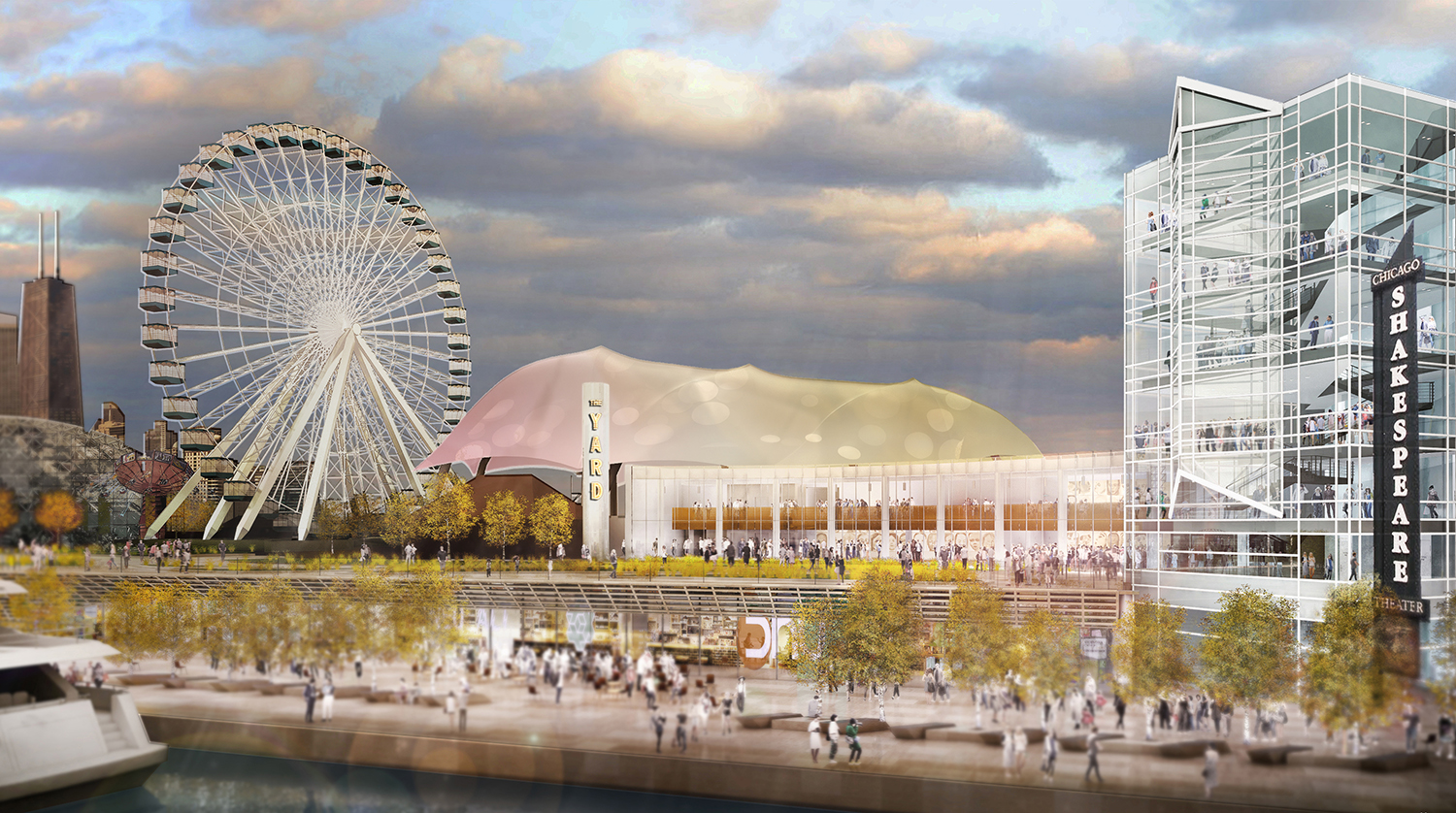Adrian Smith + Gordon Gill Architecture Named Design Architect For The Yard At Chicago Shakespeare Theater
CHICAGO, April 12, 2016 – Adrian Smith + Gordon Gill Architecture (AS+GG) Design Partner Gordon Gill has been named as the Design Architect for The Yard at Chicago Shakespeare Theater, a new flexible theater and lobby that connects with the existing Chicago Shakespeare Theater at Navy Pier.
Gordon Gill, FAIA is one of the world’s foremost exponents of performance- based architecture. His work, which ranges performing arts theatres and world expositions to sustainable communities, is driven by his philosophy that there is a purposeful relationship between formal design and performance; that there is a Language of Performance, which is the basis of his practice: Form Follows Performance. In 2015, AS+GG was ranked the number one firm in the United States of America by Architect magazine.
The expanded Shakespeare Theater will feature an adaptable, flexible auditorium with modular towers and a new public lobby. Consisting of approximately 35,000 sf of space, the new theater is fully enclosed beneath the existing Skyline Stage tent, and will utilize backstage support spaces of the existing theater. The Yard will be connected to the existing facility by a glazed two-story lobby and reception space with magnificent views of Lake Michigan.
“The adaptive reuse of the project was an important aspect of the design,” says Gordon. “The new structure is artfully tucked beneath the existing signature tent structure and above an existing parking garage. Every discipline on the team had to be creative in threading the needle of space, structure, and mechanical systems.”
It was also important to incorporate technology that advanced performance-based solutions focused on reducing energy and operational costs. The design of The Yard features an electro-chromatic façade in the lobby that mitigates both glare and heat. This technologically unique solution is highly sustainable as it will reduce heat gain and cooling needs for the project.
“The glass is transformational so it tints when warmed up in the day and goes clear when cooled down in the evening,” says Gordon. “Designed with daylight sensors on the roof, the façade will be primarily tinted throughout the day becoming clearer in the evenings as the sun sets and the performances begin, like the raising of a curtain.”
